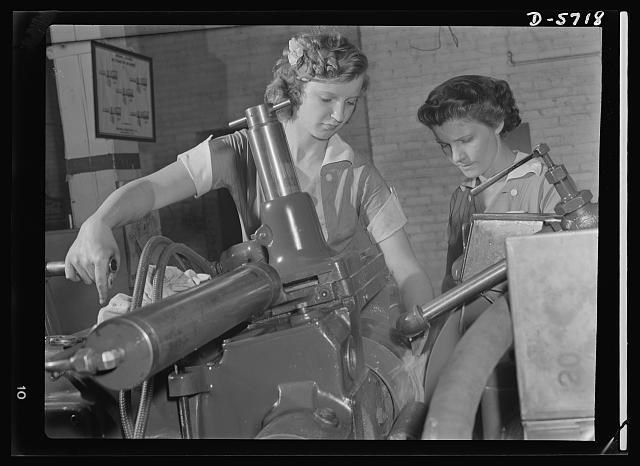Part of a series of articles titled Curiosity Kit: Women Labor Activists in Chicago.
Article
Learning from Women Labor Activists in Chicago

This Curiosity Kit Educational Resource was created by Katie McCarthy, a NCPE intern with the Cultural Resources Office of Interpretation and Education.
Background:
During the early 1900s, factory workers faced dangerous and unhealthy conditions. Men and women worked long hours with few workplace protections. During the 1930s, members of the Communist Party of the United States of America supported workers’ rights and organized protests against unfair and unsafe working conditions. Female organizers played key roles in these protests, but rarely received recognition for their work. You can learn more about some of these women by exploring the Places of Women Labor Activists in Chicago.
Objectives:
-
Research labor conditions across the United States during the Great Depression.
-
Identify labor activists and organizations during the 1930s.
-
Explore your community’s history and culture through photography.
Inquiry Question:
During the 1930s, labor organizers protested unfair and dangerous working conditions. How can we stand up to unfair situations in our own lives?
Activity One:
During the Great Depression (roughly 1929 – 1939), the Communist Party of the United States supported labor organizing and protests. However, they weren’t the only organization doing so. The American Federation of Labor (AFL) and the Congress of Industrial Organizations (CIO) also supported the efforts of industrial labor unions to fight for better working conditions. Choose one of these organizations, and research the following questions:
-
When was this organization founded?
-
Who were its members? Did its membership rules change over time?
-
Did it allow women to join in the 1930s? What kinds of roles did women have in this organization?
-
Did it allow Black people to join in the 1930s? What kinds of roles did Black workers have in this organization?
-
Who were the leaders of this organization in the 1930s?
-
What kinds of activities/events/protests did this organization support during the 1930s?
-
What kind of relationship did this organization have with federal or local government during the 1930s?
-
What “wins” did this organization have in the 1930s? What “losses?”
Activity Two:
While unions in cities worked to create better working conditions, rural farmers fought to overcome different struggles. The Dust Bowl, a period of intense drought and dust storms, coincided with the Great Depression. During this period, a federal organization called the Farm Security Administration (FSA) worked to combat the poverty created by the coinciding crises. One of the FSA’s projects was the photography program. The FSA sent out eleven photographers to capture America and the people who lived there. FSA photographers took images of daily life across the United States. The FSA photography project created enduring images of the Great Depression that still influence how we think about the 1930s today. You can find FSA photographs at the Library of Congress.
Imagine you are an FSA photographer. What about your community would you capture on film? Explore your community and take 10 photos that you think best represent it. If you plan on taking a picture of a person, remember to ask their permission! As you plan out your photos, consider the following questions:
-
What spaces are meaningful to you?
-
Where are the gathering spaces in your community?
-
What spaces in your community have lots of history?
-
Are there famous landmarks in your community?
-
Are there special events in your community that happen annually? Where do they occur?
-
Who or what makes your community special?
-
How do the spaces you chose help others learn about your community?
Activity Three:
Kate Hyndman, Vicky Starr and Sylvia Woods were not the only female labor activists working in the 1930s. Many female activists fought for better working conditions both for women and for all workers throughout the United States. Although female activists played important roles in the labor movement, for the most part men overlooked, or ignored, their contributions. Women involved in labor activism during the 1930s included Genora Dollinger, Elizabeth Gurley Flynn, Clara Lemlich, Luisa Moreno, Pauline Newman, Frances Perkins, Rose Pesotta, Rose Schneiderman, Emma Tenayuca, and Rosina Tucker, among many others.
Choose one of the women listed above (or another female activist who you find interesting) and research their life. Consider the following questions as you do:
-
When was this woman born?
-
How did she become involved in labor activism?
-
What organization(s) did she work with?
-
Who did she work with?
-
What labor protests was she involved
-
What is she most known for today?
Last updated: June 8, 2021
